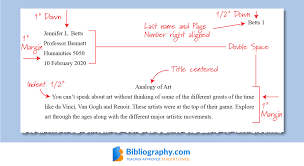Synopsis:
MLA (Modern Language Association) style is most normally used to compose papers and refer to sources inside the aesthetic sciences and humanities. This asset, refreshed to mirror the MLA Handbook (eighth ed.), offers models for the overall arrangement of MLA research papers, in-text references, endnotes/commentaries, and the Works Cited page.
The accompanying outline should assist you with better arrangement how to refer to sources utilizing MLA eighth version, including the rundown of works refered to and in-text references.
Making a Works Cited list utilizing the eighth version
MLA has gone to a style of documentation that depends on an overall strategy that might be applied to each conceivable source, to a wide range of sorts of composing. Be that as it may, since texts have become progressively portable, and a similar archive might be found in a few unique sources, adhering to a bunch of fixed guidelines is as of now not adequate.
The current framework depends on a couple of standards, rather than a broad rundown of explicit principles. While the handbook actually gives instances of how to refer to sources, it is coordinated by the course of documentation, rather than by the actual sources. This cycle shows authors an adaptable technique that is generally relevant. When you know about the strategy, you can utilize it to record any kind of source, for a paper, in any field.
Here is an outline of the cycle:
While choosing how to refer to your source, start by counseling the rundown of center components. These are the overall snippets of data that MLA proposes remembering for each Works Cited section. In your reference, the components should be recorded in the accompanying order:
- Author.
- Title of source.
- Title of container,
- Other contributors,
- Version,
- Number,
- Publisher,
- Publication date,
- Location.
Every component ought to be trailed by the accentuation mark displayed here. Prior releases of the handbook incorporated the spot of distribution, and required accentuation like diary versions in brackets, and colons after issue numbers. In the current rendition, accentuation is less difficult (just commas and periods separate the components), and data about the source is kept to the rudiments.
Author
Start the section with the creator's last name, trailed by a comma and the remainder of the name, as introduced in the work. End this component with a period.
Said, Edward W. Culture and Imperialism. Knopf, 1994.
Title of source
The title of the source ought to follow the creator's name. Contingent on the sort of source, it should be recorded in italics or quotes.
A book should be in italics:
Henley, Patricia. The Hummingbird House. MacMurray, 1999.
A site should be in italics:
Lundman, Susan. "The most effective method to Make Vegetarian Chili." eHow, www.ehow.com/how_10727_make-veggie lover chili.html.*
A periodical (diary, magazine, paper) article should be in quotes:
Bagchi, Alaknanda. "Clashing Nationalisms: The Voice of the Subaltern in Mahasweta Devi's Bashai Tudu." Tulsa Studies in Women's Literature, vol. 15, no. 1, 1996, pp. 41-50.
A tune or piece of music on a collection should be in quotes:
Beyoncé. "Implore You Catch Me." Lemonade, Parkwood Entertainment, 2016, www.beyonce.com/collection/lemonade-visual-collection/.
*The eighth version handbook suggests including URLs while refering to online sources. For more data, see the "Discretionary Elements" area underneath.
Title of holder
Not at all like prior forms, the eighth version alludes to compartments, which are the bigger wholes where the source is found. For instance, to refer to a sonnet that is recorded in an assortment of sonnets, the singular sonnet is the source, while the bigger assortment is the holder. The title of the compartment is generally stressed and followed by a comma, since the data that follows next depicts the holder.
Kincaid, Jamaica. "Young lady." The Vintage Book of Contemporary American Short Stories, altered by Tobias Wolff, Vintage, 1994, pp. 306-07.
The holder may likewise be a TV series, which is comprised of episodes.
"94 Meetings." Parks and Recreation, made by Greg Daniels and Michael Schur, execution by Amy Poehler, season 2, episode 21, Deedle-Dee Productions and Universal Media Studios, 2010.
The compartment may likewise be a site, which contains articles, postings, and different works.
Zinkievich, Craig. Interview by Gareth Von Kallenbach. Slanted and Reviewed, 27 Apr. 2009, www.arcgames.com/en/games/star-journey on the web/news/detail/1056940-slanted &-investigated interviews-craig. Gotten to 15 Mar. 2009.
At times, a compartment may be inside a bigger holder. You could have perused a book of brief tales on Google Books, or watched a TV series on Netflix. You could have tracked down the electronic variant of a diary on JSTOR. It is critical to refer to these holders inside compartments so your perusers can observe the specific source that you utilized.
"94 Meetings." Parks and Recreation, season 2, episode 21, NBC, 29 Apr. 2010. Netflix, www.netflix.com/watch/70152031?trackId=200256157&tctx=0,20,0974d361-27cd-44de-9c2a-2d9d868b9f64-12120962.
Langhamer, Claire. "Love and Courtship in Mid-Twentieth-Century England." Historical Journal, vol. 50, no. 1, 2007, pp. 173-96. ProQuest, doi:10.1017/S0018246X06005966. Gotten to 27 May 2009.
Different benefactors
Notwithstanding the creator, there might be different supporters of the source who ought to be acknowledged, like editors, artists, interpreters, and so on In the event that their commitments are pertinent to your exploration, or important to distinguish the source, remember their names for your documentation.
Note: In the eighth version, terms like proofreader, artist, interpreter, and so forth, are not generally contracted.
Foucault, Michel. Franticness and Civilization: A History of Insanity in the Age of Reason. Deciphered by Richard Howard, Vintage-Random House, 1988.
Woolf, Virginia. Jacob's Room. Commented on and with a presentation by Vara Neverow, Harcourt, Inc., 2008.
Form
Assuming a source is recorded as a release or form of a work, remember it for your reference.
The Bible. Approved King James Version, Oxford UP, 1998.
Crowley, Sharon, and Debra Hawhee. Old Rhetorics for Contemporary Students. third ed., Pearson, 2004.
Number
Assuming a source is essential for a numbered succession, for example, a multi-volume book, or diary with both volume and issue numbers, those numbers should be recorded in your reference.
Dolby, Nadine. "Research in Youth Culture and Policy: Current Conditions and Future Directions." Social Work and Society: The International Online-Only Journal, vol. 6, no. 2, 2008, www.socwork.net/sws/article/view/60/362. Gotten to 20 May 2009.
"94 Meetings." Parks and Recreation, made by Greg Daniels and Michael Schur, execution by Amy Poehler, season 2, episode 21, Deedle-Dee Productions and Universal Media Studios, 2010.
Quintilian. Institutio Oratoria. Interpreted by H. E. Head servant, vol. 2, Loeb-Harvard UP, 1980.
Distributer
The distributer delivers or conveys the source to general society. Assuming there is more than one distributer, and they are all are applicable to your examination, show them in your reference, isolated by a forward slice (/).
Klee, Paul. Twittering Machine. 1922. Historical center of Modern Art, New York. The Artchive, www.artchive.com/artchive/K/klee/twittering_machine.jpg.html. Gotten to May 2006.
Ladies' Health: Problems of the Digestive System. American College of Obstetricians and Gynecologists, 2006.
Daniels, Greg and Michael Schur, makers. Parks and Recreation. Deedle-Dee Productions and Universal Media Studios, 2015.
Note: the distributer's name need not be remembered for the accompanying sources: periodicals, works distributed by their creator or proofreader, a site whose title is similar name as its distributer, a site that makes works accessible yet doesn't really distribute them (like YouTube, WordPress, or JSTOR).
Distribution date
A similar source might have been distributed on more than one date, like an internet based form of a unique source. For instance, a TV series could have circulated on a transmission network on one date, however delivered on Netflix on an alternate date. At the point when the source has more than one date, it is adequate to utilize the date that is generally pertinent to your utilization of it. Assuming that you're uncertain with regards to which date to utilize, go with the date of the source's unique distribution.
In the accompanying model, Mutant Enemy is the essential creation organization, and "Quiet" was delivered in 1999. This is the method for making an overall reference for a TV episode.
"Quiet." Buffy the Vampire Slayer, made by Joss Whedon, execution by Sarah Michelle Gellar, season 4, Mutant Enemy, 1999.
In any case, in the event that you are talking about, for instance, the authentic setting in which the episode initially circulated, you should refer to the full date. Since you are determining the date of broadcasting, you would then utilize WB Television Network (rather than Mutant Enemy), since it was the organization (rather than the creation organization) that circulated the episode on the date you're refering to.
"Quiet." Buffy the Vampire Slayer, made by Joss Whedon, execution by Sarah Michelle Gellar, season 4, episode 10, WB Television Network, 14 Dec. 1999.
Area
You ought to be just about as explicit as conceivable in distinguishing a work's area.
An exposition in a book, or an article in diary ought to incorporate page numbers.
Adiche, Chimamanda Ngozi. "On Monday of Last Week." The Thing around Your Neck, Alfred A. Knopf, 2009, pp. 74-94.
The area of a web-based work ought to incorporate a URL.
Wheelis, Mark. "Researching Disease Outbreaks Under a Protocol to the Biological and Toxin Weapons Convention." Emerging Infectious Diseases, vol. 6, no. 6, 2000, pp. 595-600, wwwnc.cdc.gov/eid/article/6/6/00-0607_article. Gotten to 8 Feb. 2009.
An actual item that you encountered firsthand ought to recognize the spot of area.
Matisse, Henri. The Swimming Pool. 1952, Museum of Modern Art, New York.
Discretionary components
The eighth version is intended to be pretty much as smoothed out as could really be expected. The writer ought to incorporate any data that assists readers with effectively recognizing the source, without including pointless data that might occupy. Coming up next is a rundown of select discretionary components that ought to be important for an archived source at the author's circumspection.
Date of unique distribution:
Assuming that a source has been distributed on more than one date, the author might need to incorporate the two dates in the event that it will give the peruser essential or accommodating data.
Erdrich, Louise. Love Medicine. 1984. Perpetual Harper, 1993.
City of distribution:
The seventh release handbook required the city in which a distributer is found, however the eighth version expresses that this is just important specifically cases, for example, in a work distributed before 1900. Since pre-1900 works were typically connected with the city wherein they were distributed, your documentation might substitute the city name for the distributer's name.
Thoreau, Henry David. Outings. Boston, 1863.
Date of access:
At the point when you refer to an internet based source, the MLA Handbook suggests remembering a date of access for which you got to the material, since a web-based work might change or move whenever.
Bernstein, Mark. "10 Tips on Writing the Living Web." A List Apart: For People Who Make Websites, 16 Aug. 2002, alistapart.com/article/writeliving. Gotten to 4 May 2009.
URLs:
As referenced above, while the eighth version suggests including URLs when you refer to online sources, you ought to constantly check with your educator or proofreader and incorporate URLs at their circumspection.
DOIs:
A DOI, or advanced article identifier, is a progression of digits and letters that prompts the area of an internet based source. Articles in diaries are frequently allocated DOIs to guarantee that the source is locatable, regardless of whether the URL changes. Assuming your source is recorded with a DOI, utilize that rather than a URL.
Alonso, Alvaro, and Julio A. Camargo. "Poisonousness of Nitrite to Three Species of Freshwater Invertebrates." Environmental Toxicology, vol. 21, no. 1, 3 Feb. 2006, pp. 90-94. Wiley Online Library, doi: 10.1002/tox.20155.
Making in-text references utilizing the eighth version
The in-text reference is a short reference inside your text that shows the source you counseled. It ought to appropriately ascribe any thoughts, summarizes, or direct citations to your source, and should guide perusers to the section in the rundown of works refered to. Generally, an in-message reference is the creator's name and page number (or simply the page number, assuming the creator is named in the sentence) in brackets:
Colonialism is "the training, the hypothesis, and the perspectives of a ruling metropolitan place managing a far off region" (Said 9).
or on the other hand
As per Edward W. Said, colonialism is characterized by "the training, the hypothesis, and the mentalities of a ruling metropolitan community managing a far off domain" (9).
Work Cited
Said, Edward W. Culture and Imperialism. Knopf, 1994.
While making in-text references for media that has a runtime, like a film or web recording, incorporate the scope of hours, minutes and seconds you intend to reference, as so (00:02:15-00:02:35).
Once more, you want to credit your source and give your peruser a reference without intruding on your text. Your perusers ought to have the option to follow the progression of your contention without becoming diverted by additional data.
Last contemplations about the eighth version
The current MLA rules show you a generally appropriate expertise. When you come out as comfortable with the center components that should be remembered for every passage in the Works Cited show, you will actually want to make documentation for a source. While the handbook actually incorporates supportive models that you might use as rules, you won't have to counsel it each time you want to sort out some way to refer to a source you've never utilized. Assuming that you incorporate the center components, all neat and tidy, utilizing steady accentuation, you will be completely prepared to make a rundown of works refered to all alone.
 English
English Persian
Persian

